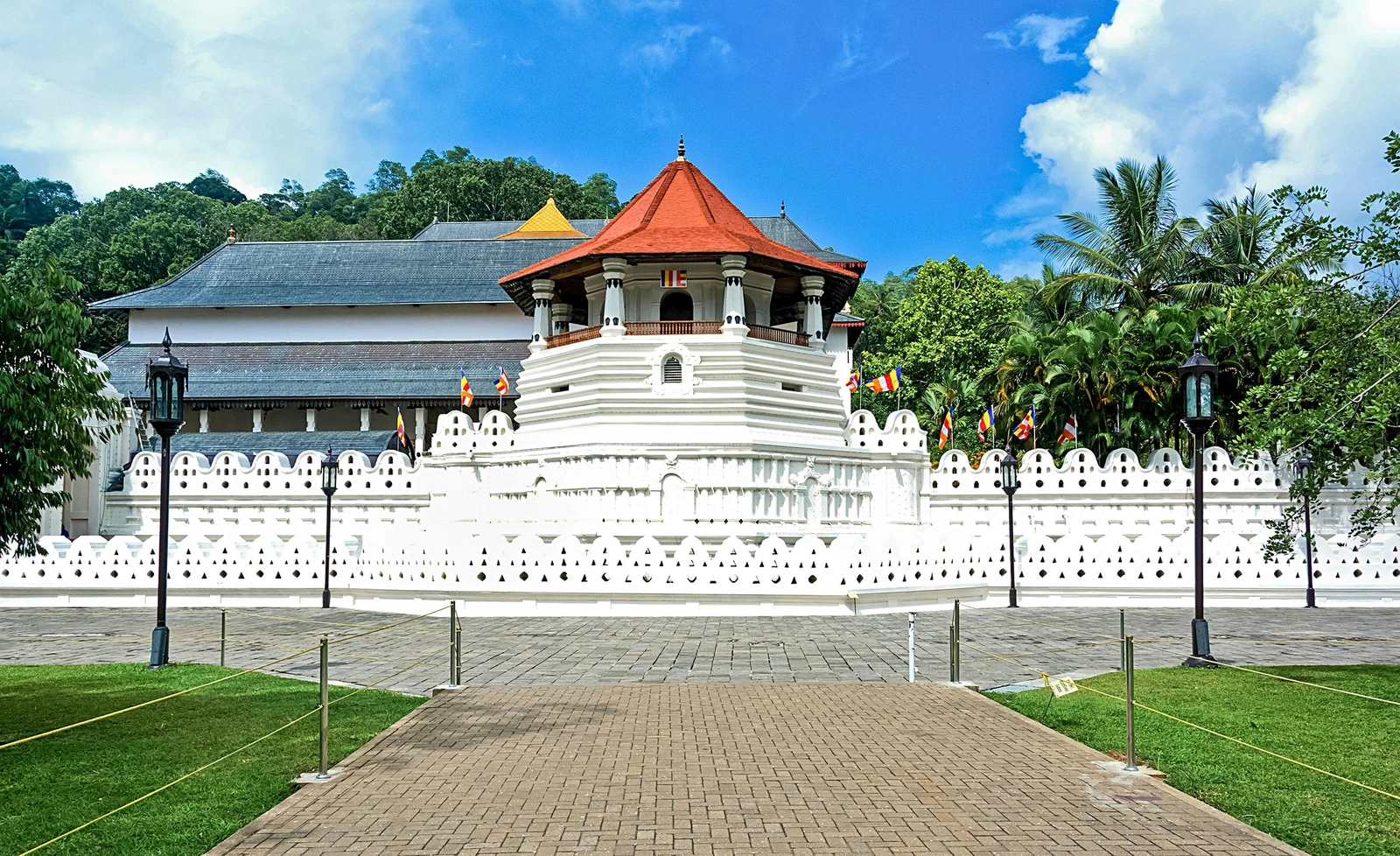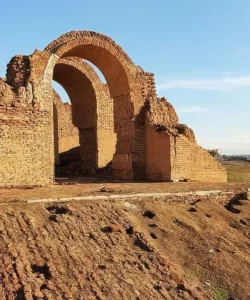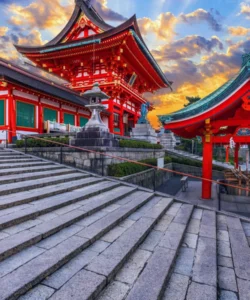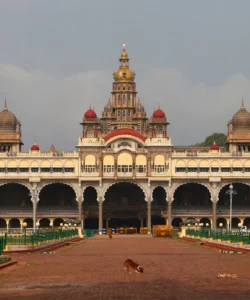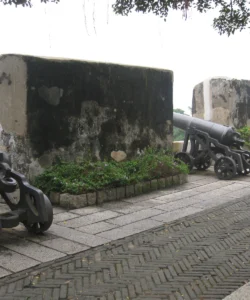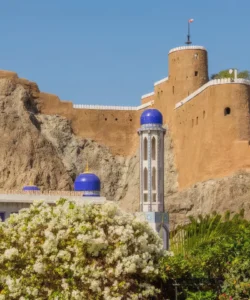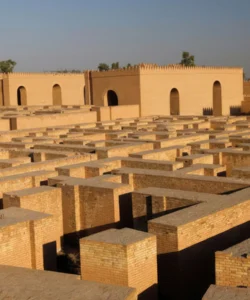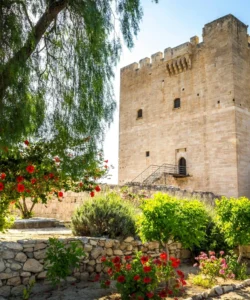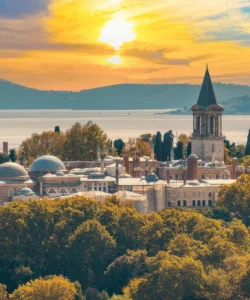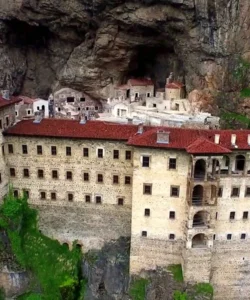The Temple of the Sacred Tooth Relic, locally known as Sri Dalada Maligawa (ශ්රී දළදා මාළිගාව), is a revered Buddhist temple located in the city of Kandy, Sri Lanka. It houses what is believed to be the sacred tooth relic of Lord Gautama Buddha, making it the most important Buddhist shrine in Sri Lanka and a significant pilgrimage site for Buddhists worldwide. Its profound spiritual importance, coupled with its rich history and architectural beauty, earned it a place as a UNESCO World Heritage site (as part of the Sacred City of Kandy).
![]()
Name: Temple of the Sacred Tooth Relic (Sri Dalada Maligawa; ශ්රී දළදා මාළිගාව)
Address: Sri Dalada Veediya, Kandy, Sri Lanka. It is located within the royal palace complex of the former Kingdom of Kandy, on the north side of Kandy Lake.
How to get there:
The Temple of the Tooth Relic is centrally located in Kandy and is a major attraction, easily accessible:
- From Colombo to Kandy:
* Train (Recommended): Take a train from Colombo Fort Railway Station to Kandy Railway Station. This is a very scenic journey, particularly the “upcountry” routes. The journey takes approximately 3-4 hours. From Kandy Railway Station, it’s a short 5-minute tuk-tuk ride or a 15-minute walk to the temple.
* Bus: Regular buses run from Colombo’s Bastian Mawatha Bus Terminal to Kandy. The journey takes about 3-4 hours. From Kandy Central Bus Stand, take a tuk-tuk or walk.
* Taxi/Private Car: Available from Colombo, taking around 3-4 hours, depending on traffic. - Within Kandy:
- Walking: The temple is a short walk from many hotels around Kandy Lake and from Kandy Railway Station.
- Tuk-tuk: Readily available throughout Kandy for short rides.
Operating Hours and Entrance Fee:
- Operating Hours: Generally open daily from 5:30 AM to 8:00 PM.
- Entrance Fee: For foreign visitors, the entrance fee is typically LKR 1,500 – 2,000 per person. Visitors are expected to dress respectfully (shoulders and knees covered, no hats).
Landscape and Architecture:
The Temple of the Tooth Relic is an impressive complex that combines elements of traditional Kandyan architecture with intricate details, set by the picturesque Kandy Lake:
- Inner Shrine (Dalada Maligawa): The main shrine housing the sacred tooth relic is a two-story building. The relic itself is not directly visible to the public but is encased in a series of seven golden caskets (like nested stupas), studded with precious gemstones, within a special inner chamber known as the “Handun Kunama.”
- Kandyan Architecture: The temple complex exemplifies classical Kandyan architecture, characterized by its thick walls, elaborate roofs, wooden pillars, and intricate carvings. The building has undergone several reconstructions and renovations over centuries.
- Octagonal Pavilion (Pattirippuwa): A distinctive octagonal tower built by King Sri Wickrama Rajasinghe in the early 19th century, located facing the Kandy Lake. It was originally used by the king to address the public and is now a prominent feature of the temple.
- Moat and Lake: The temple complex is surrounded by a protective moat, which seamlessly connects to the larger Kandy Lake (Kiri Muhuda – Sea of Milk). The lake, built by King Sri Wickrama Rajasinghe, adds to the serene and picturesque setting of the temple.
- Audience Hall (Magul Maduwa): A beautifully preserved open-air pavilion within the complex, used for royal court sessions and public audiences. Its wooden pillars and carvings are notable.
- Associated Buildings: The complex also includes the remnants of the Royal Palace of Kandy, the Sri Dalada Museum (housing gifts to the relic and historical artifacts), and the World Buddhist Museum (showcasing Buddhist heritage from around the globe).
- Drumming and Rituals (Thewawa): Throughout the day, particularly at dawn, noon, and evening, ceremonial drumming and traditional rituals (Thewawa) are performed in the inner chamber where the relic is kept, creating a deeply spiritual and authentic atmosphere.
- Gold and Ivory: The inner temple is richly adorned with gold, silver, bronze, and ivory, reflecting its immense value and sacredness.
What makes it famous:
The Temple of the Tooth Relic is famous for:
- Housing the Sacred Tooth Relic of the Buddha: This is its unparalleled distinction. The relic is considered the most sacred Buddhist artifact in Sri Lanka and one of the most revered globally, drawing pilgrims from all over the world.
- Symbol of Sovereignty: Historically, whoever possessed the tooth relic was believed to have the divine right to rule Sri Lanka, making it a powerful symbol of national governance and sovereignty. This political significance is intertwined with its religious role.
- UNESCO World Heritage Site: Designated as part of the “Sacred City of Kandy” in 1988, recognized for its role in the perpetuation of Buddhism and as a unique sacred site.
- Esala Perahera Festival: It is the central focus of the annual Kandy Esala Perahera, one of Asia’s grandest and most spectacular Buddhist festivals. During this 10-day procession (July/August), a replica of the relic casket is carried by a majestic adorned elephant through the streets of Kandy, accompanied by dancers, drummers, and fire-eaters.
- Kandyan Architecture: It is a prime example of the unique and intricate Kandyan architectural style, reflecting the distinct artistic traditions of Sri Lanka’s last kingdom.
- Living Temple: It remains an active and vibrant place of worship, with daily rituals performed by monks, allowing visitors to witness living Buddhist practices.
Differences from some other wonders:
The Temple of the Tooth Relic distinguishes itself from other Buddhist temples and sacred sites in several profound ways:
- Presence of a Physical Buddha Relic (Tooth): While many temples contain Buddha statues or other relics, the specific claim of housing a literal tooth relic of Gautama Buddha himself sets it apart as one of the very few such sites in the world. This direct, tangible connection to the historical Buddha is paramount to its sanctity.
- Political Symbolism and Sovereignty: Its unique historical role as the symbol of the ruler’s divine right to govern Sri Lanka gives it a profound political and national significance that extends beyond purely religious veneration. This intertwining of spiritual relic and temporal power is distinct.
- Centrality of Esala Perahera: The annual Esala Perahera festival, a globally renowned spectacle centered entirely around the veneration and procession of the tooth relic, is a unique cultural and religious event of immense scale that distinguishes the temple’s role in public ceremony.
- Specific Kandyan Architectural Style: While other temples might share broad South Asian or Buddhist architectural influences, the Temple of the Tooth Relic is a prime and well-preserved example of the distinctive Kandyan architectural style, which is specific to Sri Lanka’s last kingdom.
- Historical Vulnerability and Resilience: The tooth relic and its temple have been the target of numerous invasions and attacks (by Portuguese, Dutch, and even modern-day terrorists), highlighting its immense value and the continuous effort required to protect it. This narrative of persistent threat and survival makes its enduring presence all the more significant.
- Location within a Former Royal Palace Complex: Its integration within the historical royal palace grounds, with surrounding buildings like the Audience Hall, reinforces its historical link to the monarchy as a royal chapel and not just a public temple.
In essence, the Temple of the Tooth Relic is not merely a temple; it is a sacred repository of an extraordinary relic, a powerful symbol of national identity and sovereignty, and a magnificent example of Sri Lankan artistry, all woven into a dramatic tapestry of history and spiritual devotion.
